Table of Contents
- A detailed review and performance comparison of Sage Salt R8, Scott Sector, G.Loomis Asquith and NRX+ fly rods
- Model-by-Model Comparisons
- Salt R8 690-4 v. Sector 906-4
- Asquith 790-4 v. Sector 907-4 v. Salt R8 790-4 v. NRX+ 790-4
- Sector 908-4 v. Salt R8 890-4 v. Asquith 890-4 v. NRX+ 890-4
- Sector 909-4 v. Asquith 990-4 v. Salt R8 990-4 v. NRX+ 990-4
- Asquith 1090-4 v. NRX+ 1090-4 v. Salt R8 1090-4 v. Sector 9010-4
- Sector 9011-4 v. Asquith 1190-4 v. Salt R8 1190-4 v. NRX+ 1190-4
- Sector 9012-4 v. Asquith 1290-4 v. Salt R8 1290-4 FG v. NRX+ 1290-4
A detailed review and performance comparison of Sage Salt R8, Scott Sector, G.Loomis Asquith and NRX+ fly rods
 Saltwater fly rod review model-by-model comparison
Saltwater fly rod review model-by-model comparison
This much-anticipated and perhaps overdue head-to-head review was spurred by the introduction of the Sage Salt R8. We compare saltwater rods every day in conversations with customers, but with the Salt R8 introduction, we felt the time was right to put these four series under the microscope. Each represents the leading edge of unique rod design legacies and all will be among the very best available to global saltwater anglers for many years to come.
As of this writing, these are the rods that drive the debate. We recommend and sell plenty of Winston Air Salt and Sage Igniters, as well as the underrated Winston Alpha+, but all of those are fundamentally unique and less often compared directly with the Salt R8, Sector, Asquith and NRX+. Every Igniter is stiffer, or “faster,” than any rod in this review. Every Winston, whether an Air Salt or Alpha+, is less stiff, or “slower” than any of these rods. One and all fine fly rods, they represent the extremes of preference and purpose and are thus excluded from this comparison.
Our goal in this article is to differentiate similar models to help anglers choose the rod best aligned with their fishing preferences and casting style. We cast each rod group side-by-side with two fly lines to distinguish the nuances of casting range, feel, line speed, accuracy, power and presentation. Occasionally we landed on a universal favorite, a rod we all preferred regardless of line choice. More broadly, however, the range of our observations and preferences likely reflects the diversity of our customers. All of these rods will catch fish, but each has distinct character, so choose a rod that quickens your heartrate when you reach for it!
Alternative configurations: Scott Sector 8’4″ and 2-piece models are fantastic fly rods. If your rod will live on a boat, strongly consider one of the 8’10” 2-piece Sectors. The convenience of a 2-piece rod is undeniable for the local angler. Scott’s 8’4″ Sectors fly way under the radar, too, and while not described in this article, we implore anglers to consider one on merit of lightness, casting ease and accuracy. Unfairly categorized as “boat rods,” we find the 8’4″ Sectors to be lethal fishing tools and a pleasure to cast whether on foot or afloat. Some misconceive that a shorter rod is somehow weaker. They are actually stronger fish fighters because the lever between hand and fish is shorter.
At the end of the day, most anglers prefer a 9′ 4-piece saltwater fly rod. In our opinion, the Asquith, Salt R8, Sector and NRX+ are the most compelling choices. So, let’s get on with it. Which one will make your heart race?
This article was written by John Duncan with input on every rod model from Fly Shop Manager Parker Thompson and Richard Post, our Buyer and all-around fly fishing assassin.
Sage Salt R8
Introduced in January 2024, the Salt R8 brought Sage’s saltwater fly rods back to the everyday angler. They are a joy to fish: light, explosive, intuitive and accurate. Components are second to none. The grips are smallest in class, a gracefully contoured full Wells that lacks nothing for purchase or leverage but seems to fit the hand of every angler just a little better. The Salt R8 are legacy defining rods, taking us back to the day when Sage was the first and last word in saltwater fly rod design.
Defining characteristics: lightness, easy power, high line speed and great loops with popular saltwater lines
G.Loomis Asquith
 Years after its introduction (2016), the Loomis Asquith continues to astound anglers who have never cast one. While no rod will be considered “perfect,” rod designer Steve Rajeff clearly achieved or surpassed his ideals with the basic action of these fly rods. Some consider the grips to be chunky and unrefined; others find the components underwhelming, but none argue that Asquith rod blanks stand alone in flex and recovery characteristics, using more of the rod with greater resilience to generate the highest line speed of any fly rod.
Years after its introduction (2016), the Loomis Asquith continues to astound anglers who have never cast one. While no rod will be considered “perfect,” rod designer Steve Rajeff clearly achieved or surpassed his ideals with the basic action of these fly rods. Some consider the grips to be chunky and unrefined; others find the components underwhelming, but none argue that Asquith rod blanks stand alone in flex and recovery characteristics, using more of the rod with greater resilience to generate the highest line speed of any fly rod.
Defining characteristics: elite power, lively feel throughout the blank, line speed at all distances, ability to fish any fly line
Scott Sector
 Apart from the G Series, there is no fly rod that exemplifies the Scott design ethos more than the Sector. It is obvious to those within the industry that Rod Designer Jim Bartschi moves slowly and purposefully. He is one of those guys who doesn’t speak often, but when he does, everyone listens. When introducing a new fly rod, his goal is for it to stand at the top for a decade, or possibly longer. The Sector, introduced in 2019, is a marvel of design and performance. Some say it has “ideal saltwater action.” An incredibly broad range of anglers love these rods. Countless Telluride Angler customers have purchased multiple rods in the series after fishing their first. As casters and rod reviewers, we notice that Sectors cast the most popular fly lines better than other rods, including flats classics such as the SA and Rio Bonefish tapers.
Apart from the G Series, there is no fly rod that exemplifies the Scott design ethos more than the Sector. It is obvious to those within the industry that Rod Designer Jim Bartschi moves slowly and purposefully. He is one of those guys who doesn’t speak often, but when he does, everyone listens. When introducing a new fly rod, his goal is for it to stand at the top for a decade, or possibly longer. The Sector, introduced in 2019, is a marvel of design and performance. Some say it has “ideal saltwater action.” An incredibly broad range of anglers love these rods. Countless Telluride Angler customers have purchased multiple rods in the series after fishing their first. As casters and rod reviewers, we notice that Sectors cast the most popular fly lines better than other rods, including flats classics such as the SA and Rio Bonefish tapers.
Defining characteristics: perfectly tuned to their line weights, progressive action, sensational range
G.Loomis NRX+
 Descendant of the rods that made G.Loomis famous (GLX, NRX), NRX+ saltwater rods are trusted worldwide for their dependable performance, familiarity to the angler and indisputable power. Like lounging in a favorite armchair, many anglers get comfortable with an NRX+ and never want to leave. They are not the lightest rods in class, nor constructed with jewel box components, but the NRX+ are built to last and built to cast, as we rediscovered in several highly competitive line weights. (Intro 2019)
Descendant of the rods that made G.Loomis famous (GLX, NRX), NRX+ saltwater rods are trusted worldwide for their dependable performance, familiarity to the angler and indisputable power. Like lounging in a favorite armchair, many anglers get comfortable with an NRX+ and never want to leave. They are not the lightest rods in class, nor constructed with jewel box components, but the NRX+ are built to last and built to cast, as we rediscovered in several highly competitive line weights. (Intro 2019)
Defining characteristics: power and stability in challenging conditions, familiarity, durability
Model-by-Model Comparisons
Salt R8 690-4 v. Sector 906-4
A subtle difference in action delineates these fine fly rods. The Sector is a tad stiffer in the butt and mid-section, resulting in a more “classic saltwater action,” in the words of Richard Post. It has more “gas,” and possesses a higher gear. You can lean on this rod, haul it aggressively, fish it with a variety of lines including specialized trout streamer and bass lines, which tend to fold lesser fly rods. The Salt R8 feels a little more “finessey,” in Parker’s appraisal, more oriented toward small flies and probably a better crossover rod for trout, except in the heavy streamer category. Both rods handle a Rio Elite Bonefish and Rio Flats Pro, but the Sector with a Rio Bonefish throws the tightest loops for presenting size #6 and #8 flies on the flats. Both offer plenty of feedback, but the Sage Salt R8 has more “touch,” a possible benefit in the trout arena.
Asquith 790-4 v. Sector 907-4 v. Salt R8 790-4 v. NRX+ 790-4
Only the 12-weight category possesses rods more diverse in character. The Asquith 790-4 defines its series. Light and springy beyond compare, this superhero fly rod would be the preference of any angler, except the grip is the same as on the tarpon rods in the series. It’s thick. If you don’t mind a hefty grip, this rod is among the most spectacular saltwater fly rods you will ever fish. Otherwise, keep reading. The Sage Salt R8 has the lightest, most airy feel of the group. You can’t stomp on the butt section like the Asquith, NRX+ or Sector, so choose this rod for smaller flies and classic flats applications. This would be the ultimate Christmas Island or Belize bonefish rod, but lacks the bottom end of the others. The Sector 907-4 is the opposite. As Rich describes, “it wants you to cast off the butt.” The Sector 907-4 is ideal for someone with a relaxed casting stroke, or for fresh/salt crossover with large flies. It is probably the best bass bug rod under comparison, for example, while still a lovely rod for bones or redfish. If you fish a heavy-headed redfish line, the Sector 907-4 is your rod. The NRX+ falls into the “workmanlike” category, “old school,” according to Parker Thompson, “stiff from tip to butt.” “You have to stay on it,” according to Rich. We all agreed that the NRX+ 790-4 needs the head weight of a Flats Pro line to bring it to life, which is telling. It tolerates a strong double haul and outright needs one with an SA or Rio Bonefish taper. This rod is a popular choice among freshwater anglers who use super aggressive streamer lines for transporting articulated streamers, Zonkers, pike and bass flies.

Sector 908-4 v. Salt R8 890-4 v. Asquith 890-4 v. NRX+ 890-4
This contentious group of fly rods could start a barfight, probably has. It earned our recognition for “muddiest category,” a cohort of 8-weights that proudly demonstrates the state of the art. If you own an 8-weight and it’s not one of these, you’re missing something.
The Asquith offers the greatest possible line speed without bumping to the next line weight. It toes the line, however, because with a standard bonefish taper, the ASQ 890-4 requires a strong double haul for greatest distance and pretty loops. It responds to power better than any comparable rod, but also requires precision input from the caster. We cast it with a Rio Bonefish Taper and Rio Flats Pro, the latter of which brought it to life in the hands of every caster, including Duncan, who sometimes appears asleep at the wheel. By comparison, the Sector is more finely tuned to its line weight and purpose. The Asquith has more top end potential, but nothing casts a Rio Elite Bonefish as intuitively as the Sector 908-4. If Rio were to describe the way this line is intended to present a fly, the preferred rod would be the Sector. Ranginess and loop control are unequalled with the Sector, a remarkable fly rod that seems born for bonefish. The Sector doesn’t like the Rio Flats Pro, so it may not perform as well as the Asquith with a Rio Outbound or other shooting-style line, but for true-to-line-weight fly lines, it’s a truly refined rod.
So here comes the Salt R8 890-4, one of our favorite rods in that series. It feels stiffer than the Sector but less than the Asquith. Whereas the Sector and Asquith both flex progressively (evenly, based on the amount of line in the air), the Salt R8 has a distinct sweet spot high on the blank. It’s a prototypical “tip casting rod,” but unlike its genetic forerunners, it’s an easy rod to cast. With a Rio or SA Bonefish Taper, a moderate double haul produces explosive line speed and the tightest loops you can imagine. In the end, it casts and fishes much like the Sector, just 5% stiffer. It feels even lighter than the Sector, but the caster needs to be a little more “on it,” as Rich would say. The Sector is better short and extra-long, but the Salt R8 is magic in the fishy 40’-60’ zone.
We cast the NRX+ 890-4 last in this group and it made us go back to the beginning and re-cast the other three rods. This is the best rod in the NRX+ series. While not as light and playful as the others, it is perhaps the most stable and “automatic” of them all. I had mis-pegged this rod as one that required overlining, or overpowering in the cast. Not so. It’s stiff enough to be better with a Flats Pro than with a regular Rio or SA Bonefish taper (the Rio Flats Pro is extra-heavy in the head), but casts all of these with some of the nicest loops you’ll ever see come out of a fly rod and with the greatest stability and accuracy of any rod under comparison. It’s not light or sweet in the tip, but the casting capabilities of this rod are undeniable. It is the best “large fly” rod in the group, too, so pike/musky/striper anglers take note. This is the night train.
Sector 909-4 v. Asquith 990-4 v. Salt R8 990-4 v. NRX+ 990-4
Since 9-weights are the new 10-weights for permit, we cast the rods in this category with a Rio Elite Permit and Rio Flats Pro, both of which require a rod with torsional stability and plus power to deliver a wind-resistant fly. Since we didn’t compare these rods with a Rio or SA Bonefish line, we feel compelled to observe that the Scott Sector 909-4, paired with a Bonefish taper, is perhaps the single finest 9-weight saltwater fly rod we’ve ever cast, without variance in our opinions.
9-weights are such versatile rods, the preferred line weight for countless species and one that crosses over from bones and reds to permit, stripers, roosterfish, baby tarpon and golden dorado. The Sector 909-4 throws a Rio Elite Permit as well as any fly rod. It picks up a very long line for easy second shots, critical in permit fishing. True to the series, this progressive action rod lacks the raw butt section strength of the Asquith or Sage Igniter, so there could be better rods for casting heavy shooting heads over the surf from steep beaches, but for flats applications, it’s the rod to beat. The Loomis Asquith is the stiffest rod in class, fishing like a 9 ½ weight, but offers the greatest line speed with adequate input from the caster. It also handles the heaviest specialty lines, such as the Rio Outbound, better than any of the others. The Rio Elite Permit underlines the rods slightly, but a firm haul loads and delivers spectacular loops and line speed. Choose the Sector for a combination of bonefish and permit. Choose the Asquith for permit and striped bass, if you fish bass from the beach.
The Salt R8 is built for comfort rather than speed. Ideal for all day casting, we recommend this rod with heavy lines, including the Rio Flats Pro, for repetition casting. It’s an excellent boat striper rod, for example, and also an excellent jungle rod, where you might cast all day for a golden dorado or two.
The NRX+ 990-4 casts like a Cadillac in overdrive. It is the heaviest rod in hand, but impressive at distance and in complete control with any fly line. Loop shape is outstanding with a Rio Permit line, but it has plenty of bottom end for the Rio Flats Pro, Outbound Short or SA Titan Taper lines.

Asquith 1090-4 v. NRX+ 1090-4 v. Salt R8 1090-4 v. Sector 9010-4
Parker sums it up well by observing that both Loomis rods have a “big game feel,” fishing at the top of their line class, leaning into tarpon territory. They have very stiff butt sections that feel like they were designed independently from the rest of the rod for the exclusive purpose of fighting heavy fish. This creates a slight feel of disconnection between the hand and fly line, but the power of these two rods is undeniable.
We cast all four rods with a Rio Elite Permit line and a Flats Pro. The Asquith was the best rod with the Flats Pro, but we noticed that line speed and presentation were better on all rods with the Elite Permit taper. The Asquith is the best rod for 2nd shots as the lower rod’s stiffness rips line off the water with authority, but this rod loses its trademark “springy” feel beyond 70’ on the cast. It is outstanding for aggressive beach fishing for heavy striper and roosterfish applications, where the caster is inherently overpowering the rod and needs to hold the line extra high to clear the surf. The NRX+ has a stiff butt, soft mid-section and stiff tip. It feels “hinged,” always wanting to cast from the middle of the rod, automatic in the 40-60’ range but not as light or playful as the Sage or Scott. Both Loomis rods emphasize power over presentation.
The Scott and Sage are both better permit fishing rods, and better all-day casters for false albacore, striped bass, etc. The Sector is the easiest casting but least powerful rod in the group. Being a 10-weight, it has plenty of power for permit and will be an excellent choice for less experienced casters and those who simply don’t possess a powerful casting stroke. The Salt R8 requires more input from the caster, but generates higher line speed and handles both the Permit taper and Flats Pro line with authority, whereas the Flats Pro is too heavy on the Sector. The Salt R8 feels lightest of the group and casts tight loops in the greatest range. It’s a powerful, nimble rod that best embodies the 10-weight saltwater class.
Sector 9011-4 v. Asquith 1190-4 v. Salt R8 1190-4 v. NRX+ 1190-4
The Sector is outstanding with both the Rio Flats Pro and Rio Elite Tarpon line, loading just the right amount on each swing for shots at any distance. It has the greatest range of any rod in this group, from shortest to longest. Butt section power is spectacular without making the rod heavy or clunky. This is a marvel of progressive-fast rod design. The Asquith 11-wt fishes like an 11 ½-wt. It is probably the best fish-fighter in the group, the best 11-weight for Boca Grande and other places where 100lbs+ tarpon are common. It has the most butt section resilience for second shots, but the rod feels underlined when starting a cast fly-in-hand. For many anglers, it would take a few extra swings to generate line speed. This is a great rod for guys who hammer their cast. The NRX+ is actually springier than the Asquith, especially with the heavy-headed Rio Flats Pro. It is one of the most progressive rods in the NRX+ series, reminiscent of the 8-weight, casting well in a really wide range, but it’s also the heaviest rod in this group. The Salt R8 requires a long, strong stroke. It’s bouncy on short casts, but accuracy and line speed come when you dig into the butt section. You can’t tip-cast this rod, nor stab it into the wind, but it casts a variety of lines quite well at distance. Of all the rods in this series, the Salt R8 1190-4 will draw the most mixed reviews. Cast it before you buy it.
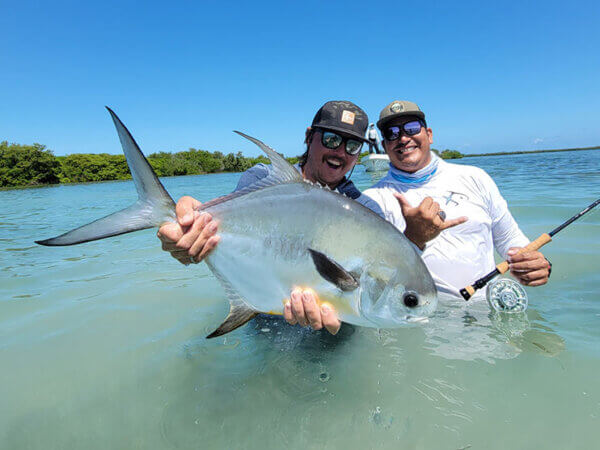
Sector 9012-4 v. Asquith 1290-4 v. Salt R8 1290-4 FG v. NRX+ 1290-4
The Sector 9012-4 is unique from the other 12-weights. In our hands, it’s underpowered for this line class, easy to load but hard to cast with power and command. The butt section is certainly stiff enough to fight large tarpon, but the angler should choose this rod only if seeking the slowest action tarpon rod available. Consider fishing it with an 11-weight line.
The Asquith, on the other hand, provides the most casting and fish fighting power while somehow also being the lightest rod in class. The only caveat is that the caster needs to throw with power and confidence. That’s the inherent nature of 12-weight fishing, of course, but the Asquith 1290-4 is a rod that asks for power and delivers power. It is, quite simply, a mind-blowing fly rod. The NRX+ isn’t far behind, surprisingly springy and intuitive with a heavy-headed line, like the Flats Pro. It’s notably heavier than the Asquith or Salt R8, but throws well at distance.
The Salt R8 1290-4 is a surprising favorite in this group. While not quite as powerful as the Loomis rods, it provides an excellent balance of castability and command. Light for a 12-weight, it has greater stability than the Sector #12 or the Salt R8 1190-4. We were surprised at how well it handled both the Rio Elite Tarpon and Rio Flats Pro, the latter of which felt heavy and clunky on many rods that we cast on this day. Range and feel are excellent and the rod has enough stiffness in the butt to pick up line for second shots, always critical in tarpon fishing.
[Fly Rods Page] [Scott Sector Page] [Sage Salt R8 Page] [G.Loomis Asquith Page] [G.Loomis NRX+ Page]

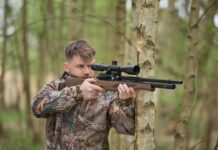






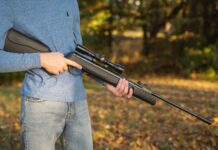












































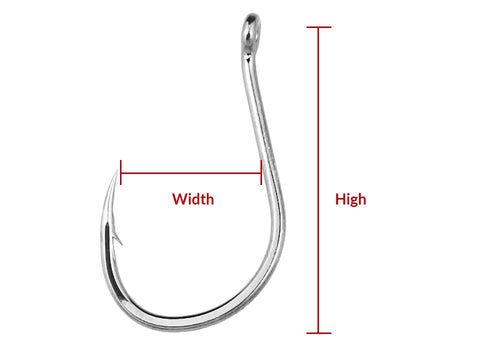
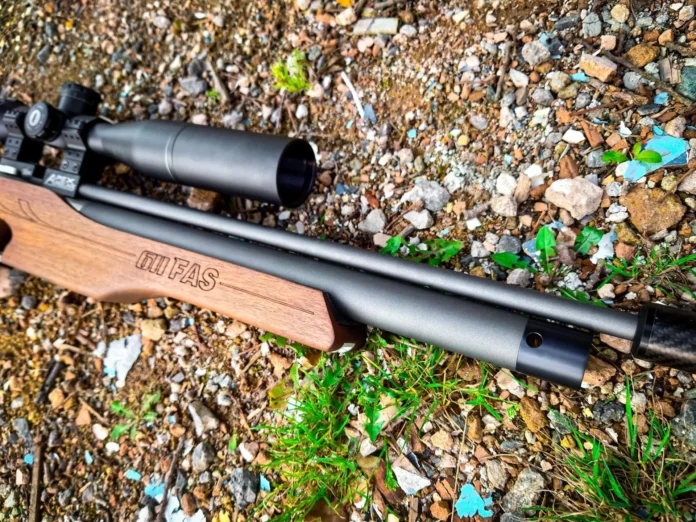








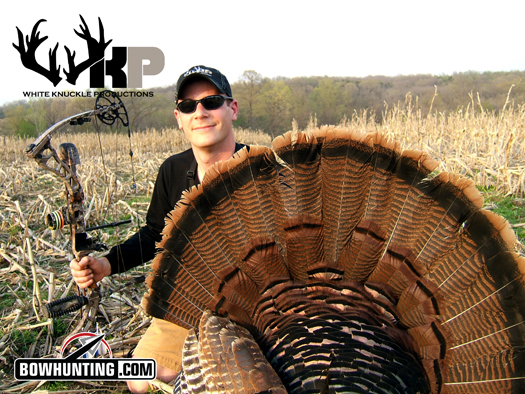
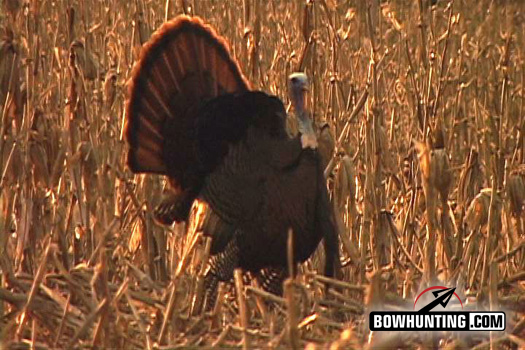 This is a picture of the giant turkey entering the field. My first thoughts were “he’s a shooter”…
This is a picture of the giant turkey entering the field. My first thoughts were “he’s a shooter”…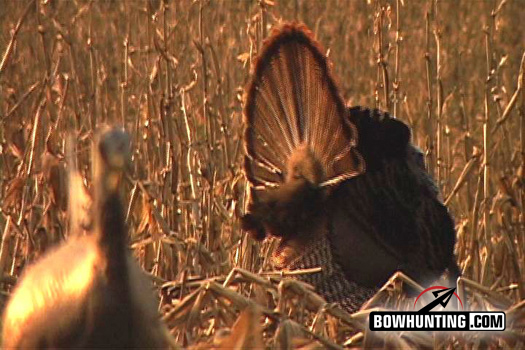 This shows my not-so-fancy decoy set-up in-front of our blind with the big tom circling at 35 yards…
This shows my not-so-fancy decoy set-up in-front of our blind with the big tom circling at 35 yards…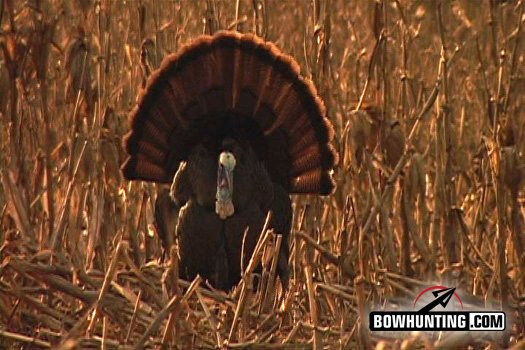
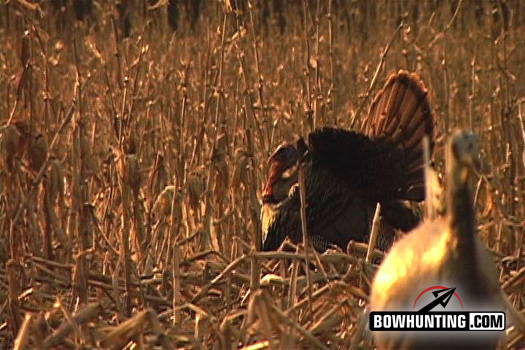 This is when the tom started heading back toward the other hen in the field. It was now or never!
This is when the tom started heading back toward the other hen in the field. It was now or never! This is Dallas and I in the bale blind just after the shot…
This is Dallas and I in the bale blind just after the shot…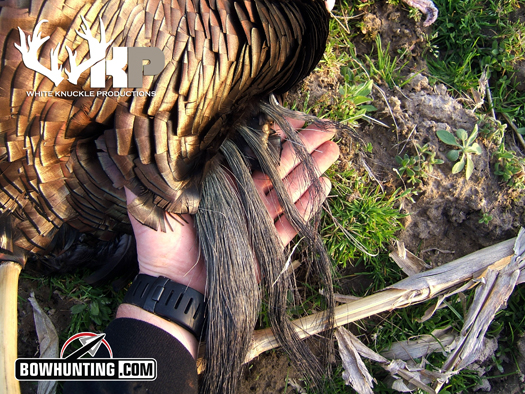 Here is a picture I took of the beards in my hand after just realizing the turkey was a multi-bearded freak bird!
Here is a picture I took of the beards in my hand after just realizing the turkey was a multi-bearded freak bird!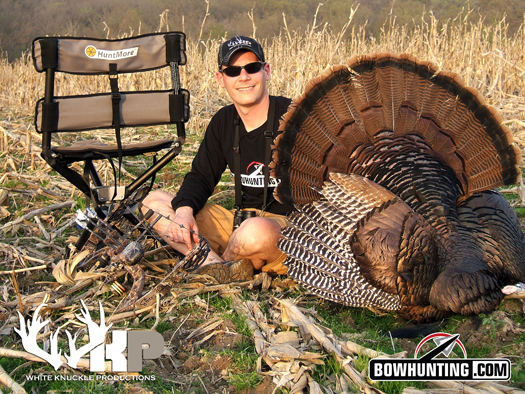
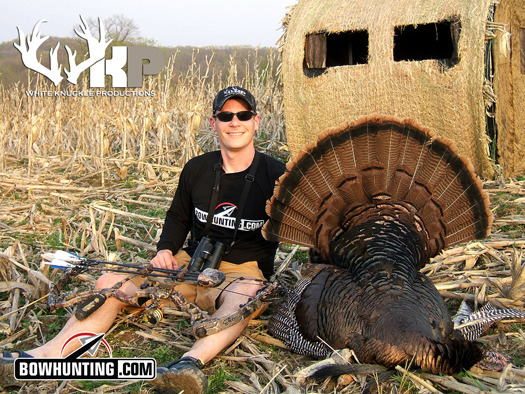 This is the Blind Ambitions Bale Blind that we used for this set-up. It worked perfectly!
This is the Blind Ambitions Bale Blind that we used for this set-up. It worked perfectly!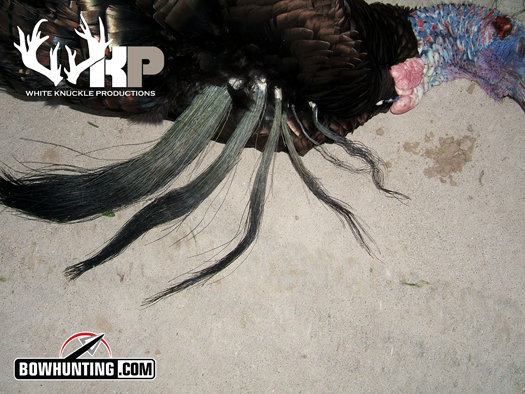 Here’s another picture of the Iowa freaks beard.
Here’s another picture of the Iowa freaks beard.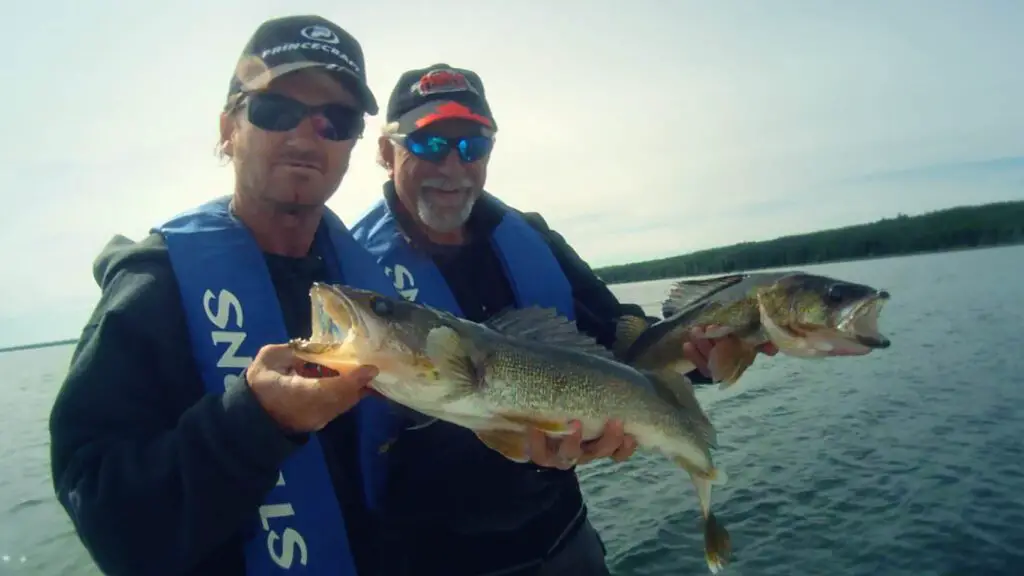
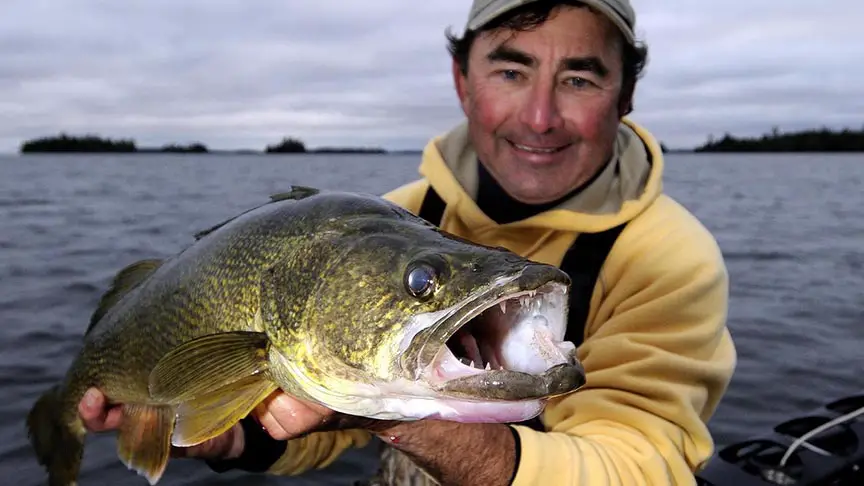
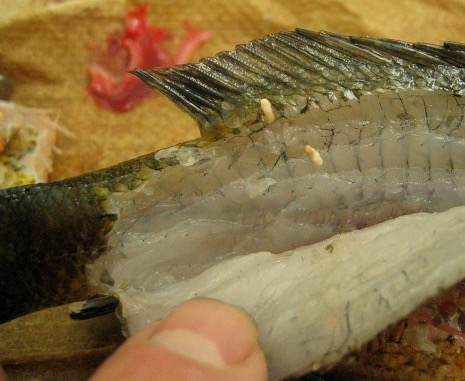
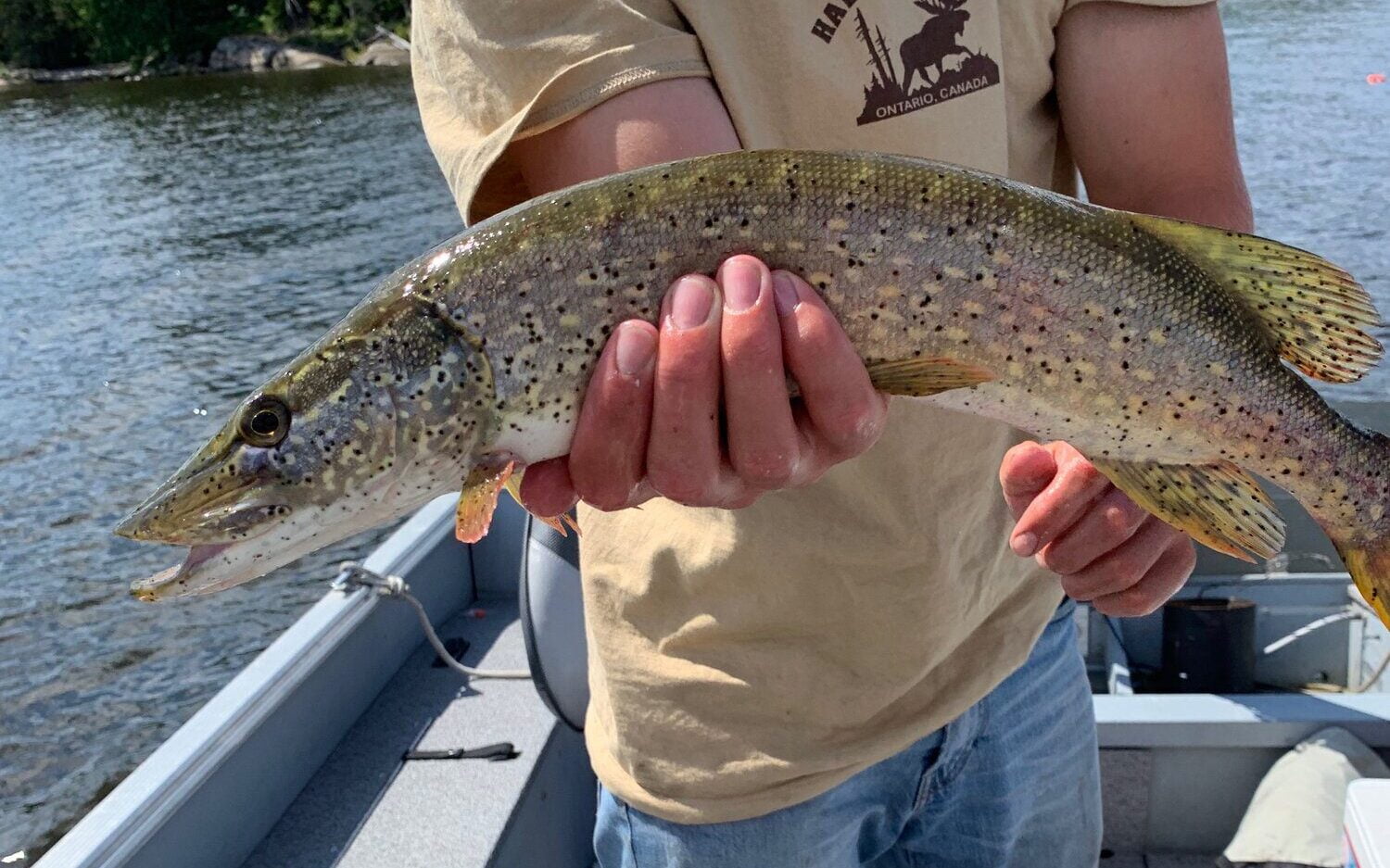










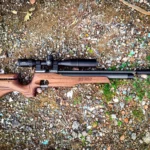

![Air gun 101: The differences between .177 & .22 – Which jobs they do best ? [Infographic]](https://airgunmaniac.b-cdn.net/wp-content/uploads/2024/11/1773-150x150.jpeg)
